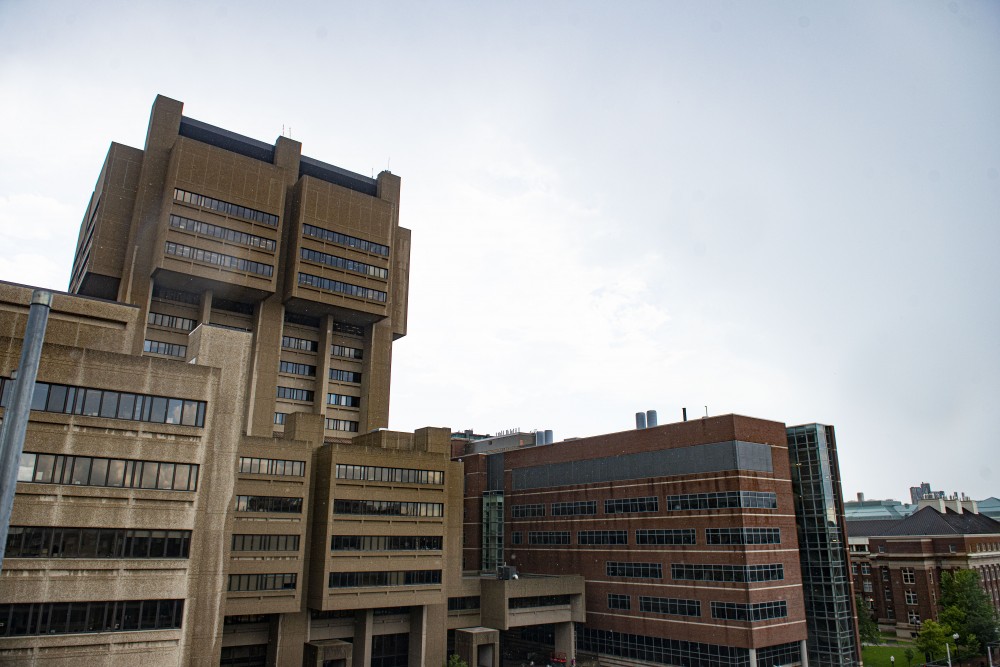Triggered by the evolving nuclear crisis in Japan, safety officials across the country are looking inward at their own nuclear facilities, including MinnesotaâÄôs two plants.
The Nuclear Regulatory Commission will spend 90 days reviewing the nationâÄôs 104 nuclear facilities for emergency preparedness, according to an announcement made earlier this week.
As the death and missing persons count after JapanâÄôs March 11 earthquake and tsunami have risen, so too has the concern about radiation levels escaping from the damaged Fukushima Daiichi nuclear power plant.
The earthquake and subsequent tsunami severely damaged the plant. Three of its six nuclear reactors were weakened, and radiation has been escaping from the plant for more than a week.
The Food and Drug Administration announced Tuesday it had banned dairy and produce from the regions surrounding the plant from entering the U.S. and will screen all other imports for possible contamination.
Very small amounts of that radiation have drifted across the Pacific Ocean and were detected in Hawaii on Tuesday by the U.S. Environmental Protection Agency. Those radiation levels were âÄúfar below any level of concern for human health,âÄù the EPA said.
All levels detected across the rest of the country have been normal, according to the EPAâÄôs monitoring.
Minnesotans shouldnâÄôt be concerned about radiation from Japan, said Dale Dorschner, manager of indoor environments and radiation at the Minnesota Department of Health.
There are two nuclear power plants in Minnesota: the Monticello Nuclear Generating Plant outside of Monticello and the Prairie Island Nuclear Generating Plant near Red Wing. Both plants are owned and operated by Xcel Energy.
Dorschner said he couldnâÄôt speculate if a crisis at either plant would affect the Twin Cities.
âÄúIt depends on a whole lot of factors: wind direction, the size of the incident âĦ there are just too many factors to consider.âÄù
The nuclear reactor at Monticello has a similar design to the reactors in Japan, but thatâÄôs no reason for concern, said Kevin Leuer from MinnesotaâÄôs division of Homeland Security and Emergency Management.
âÄúThe containment and other infrastructure are different,âÄù Leuer said. âÄúAlthough there are similarities in design, the plants here in Minnesota have more robust safety and internal backup systems than what we see in other parts of the world.âÄù
Radiation levels in the region surrounding each plant pose no risk to human health, Leuer said. Both plants are at least 40 miles from Minneapolis.
As more details from Japan emerge, experts in Minnesota and across the country will examine the mechanical failures at Fukushima that led to the crisis in hopes of improving their own evaluation systems, Leuer said.
Each plant in Minnesota goes through an emergency exercise every two years, in which the staff responds to some disaster âÄî a flood, a massive power outage or even an earthquake.
The Prairie Island plant went through the exercise last year, Leuer said.
There are four levels of emergency classifications for nuclear plants. The first and least serious is an âÄúunusual eventâÄù on the site of the plant, like a tornado. The most serious classification is a âÄúgeneral emergency,âÄù in which civilians living between a 2- and 10-mile radius from the plant will be evacuated, depending on the severity of the crisis.
Two or three notifications of unusual events have been issued in the past decade, Leuer said, but nothing more severe.
The most serious nuclear disaster in the U.S. happened in 1979 at the Three Mile Island Nuclear Power Plant in central Pennsylvania.
That March, one of the plantâÄôs reactors overheated, resulting in a meltdown not unlike those that occurred at Fukushima.
Even though the event caused no deaths and released little radiation into the surrounding area, it brought about sweeping changes in the NRCâÄôs oversight of nuclear power plants.
Once more technical information is available from the disaster in Japan, the NRC will determine if plants on American soil need more thorough review for weaknesses, spokeswoman Viktoria Mitlyng said.
âÄúRight now, [the] NRC is confident that the nuclear power plants in this country are safe,âÄù she said.
Daily Email Edition
Get MN Daily NEWS delivered to your inbox Monday through Friday!

Published April 19, 2024

Published April 19, 2024

Published April 19, 2024
Trending
After Japan crisis, officials assure state’s nuclear power is safe
Officials across the country are looking inward at their own nuclear facilities, including Minnesota’s two plants.
by Kyle Potter
Published March 24, 2011
Leave a Comment
More to Discover
Advertisement
The Minnesota Daily • © 2024 The Minnesota Daily • Privacy Policy • FLEX Pro WordPress Theme by SNO • Log in













